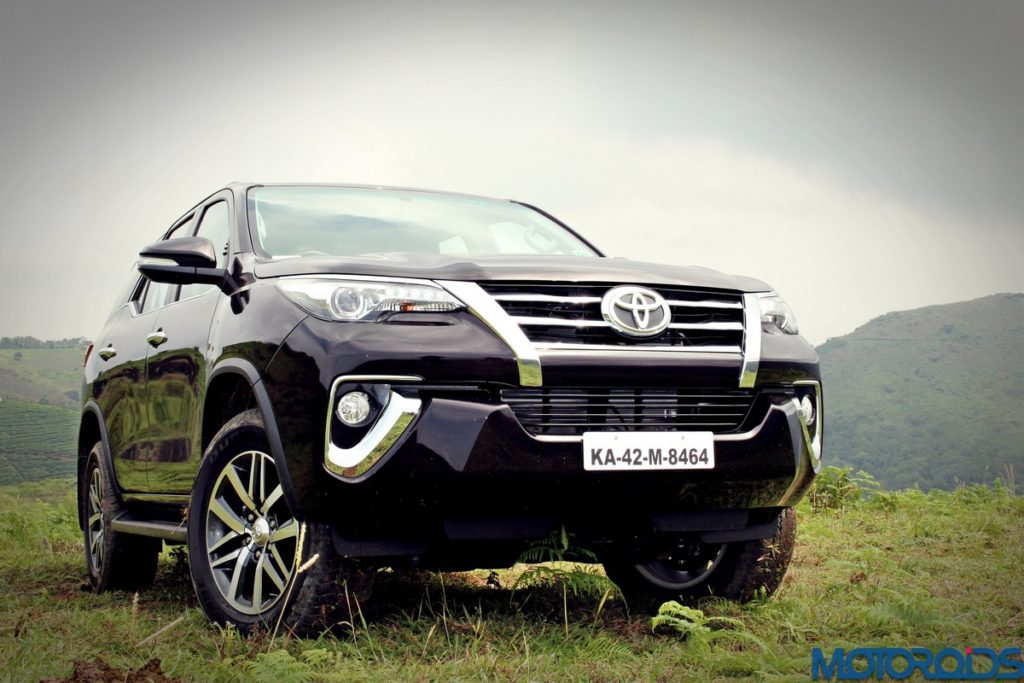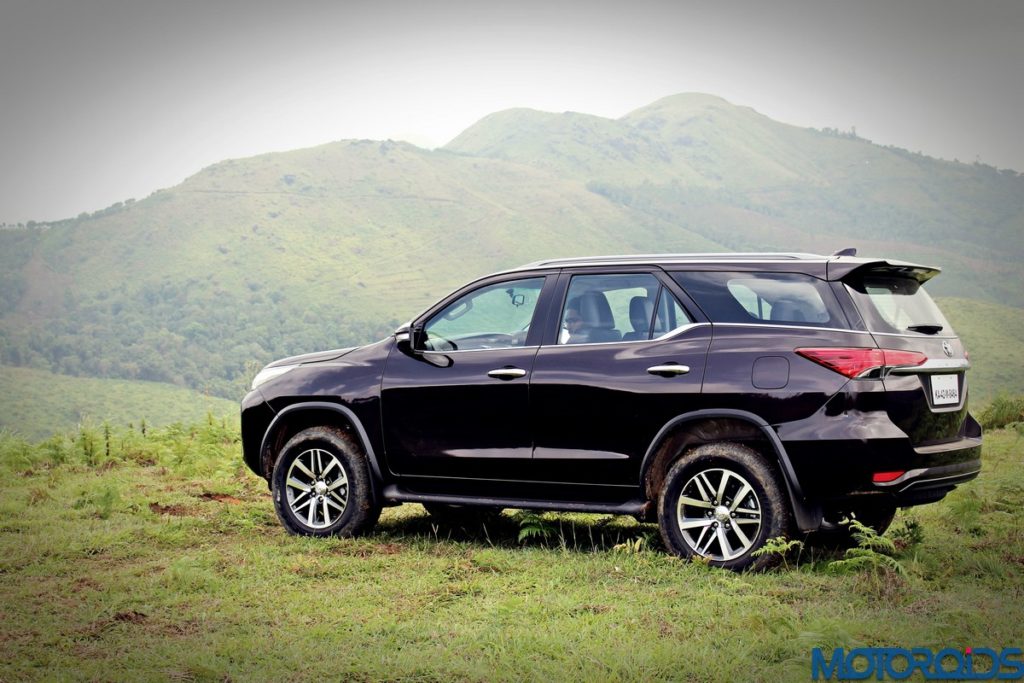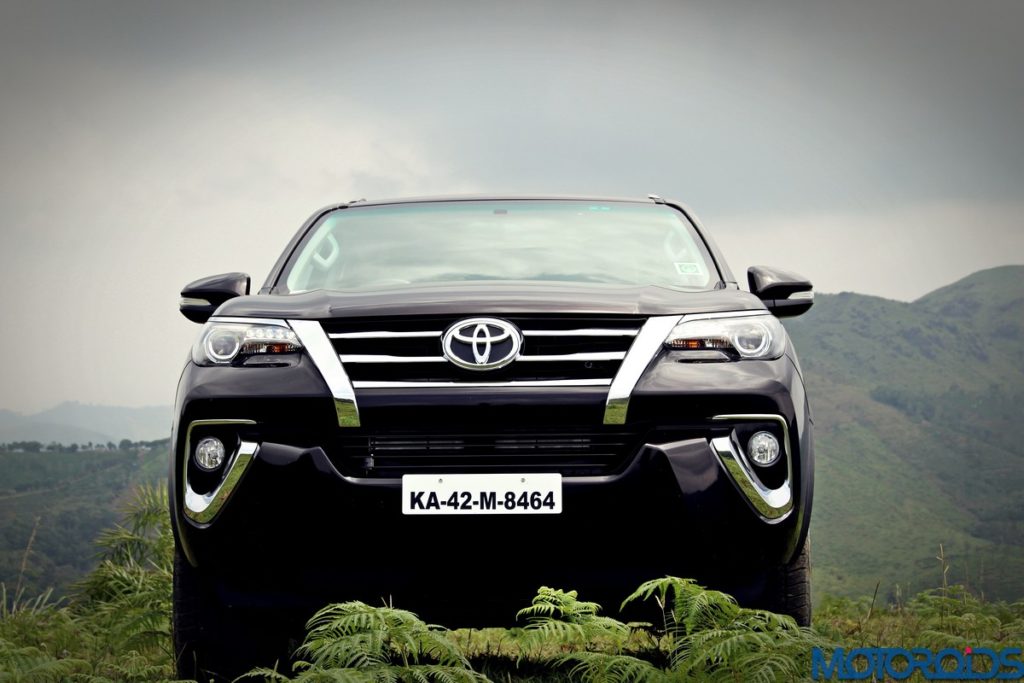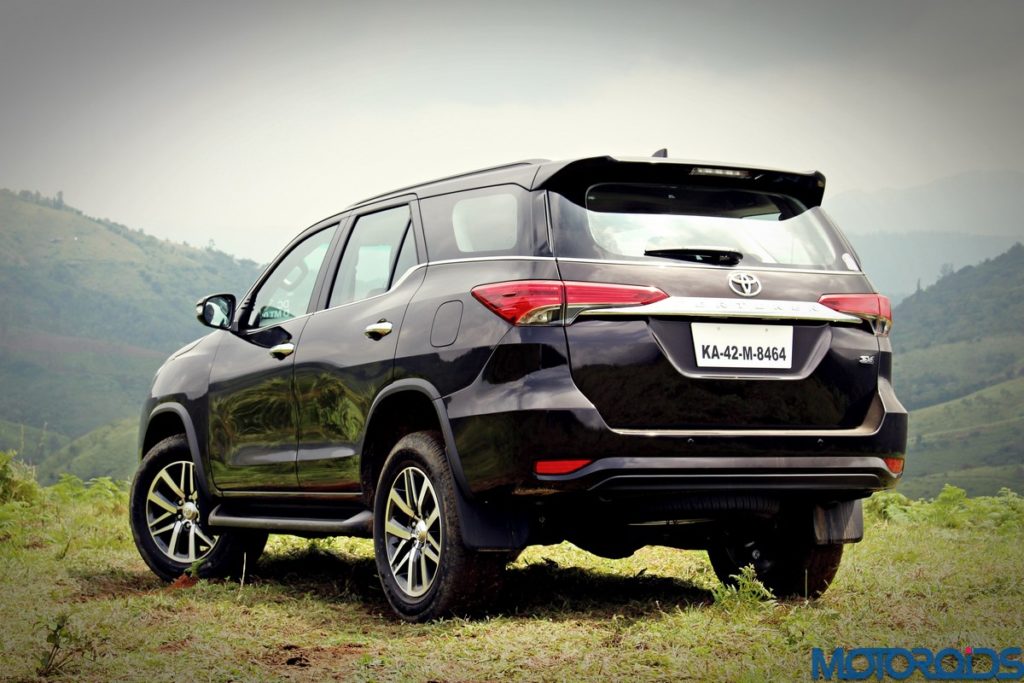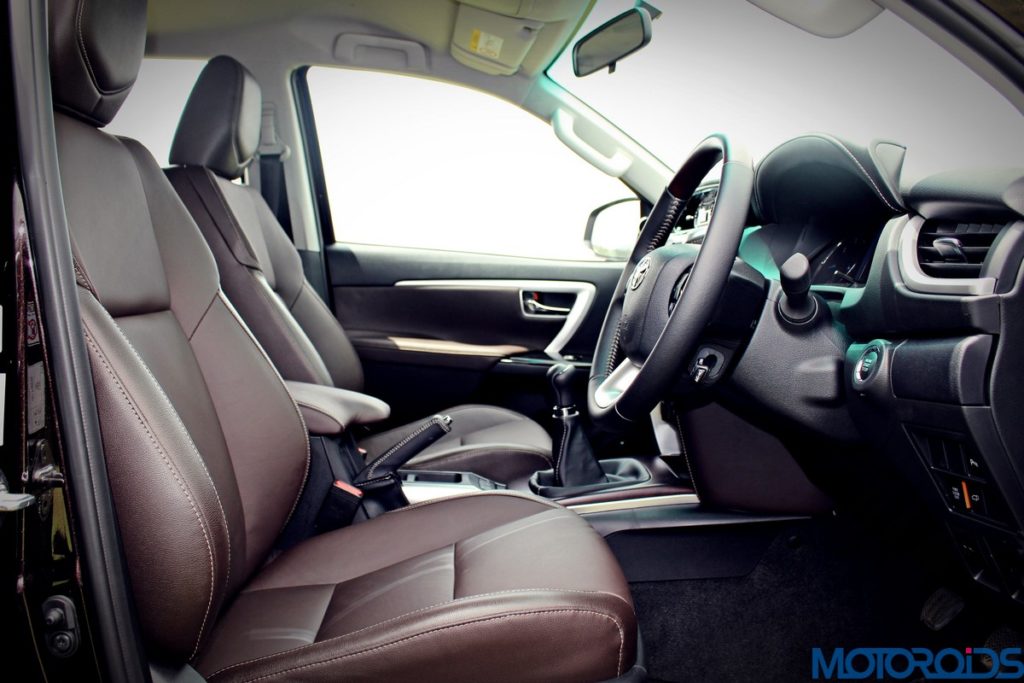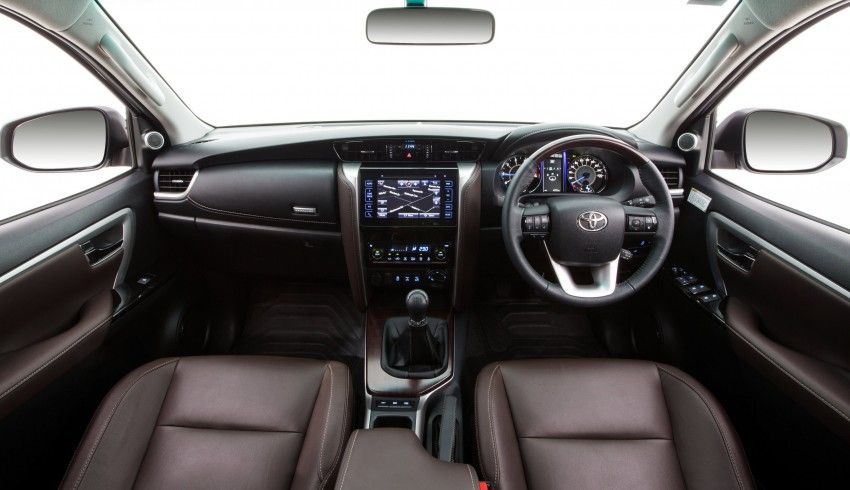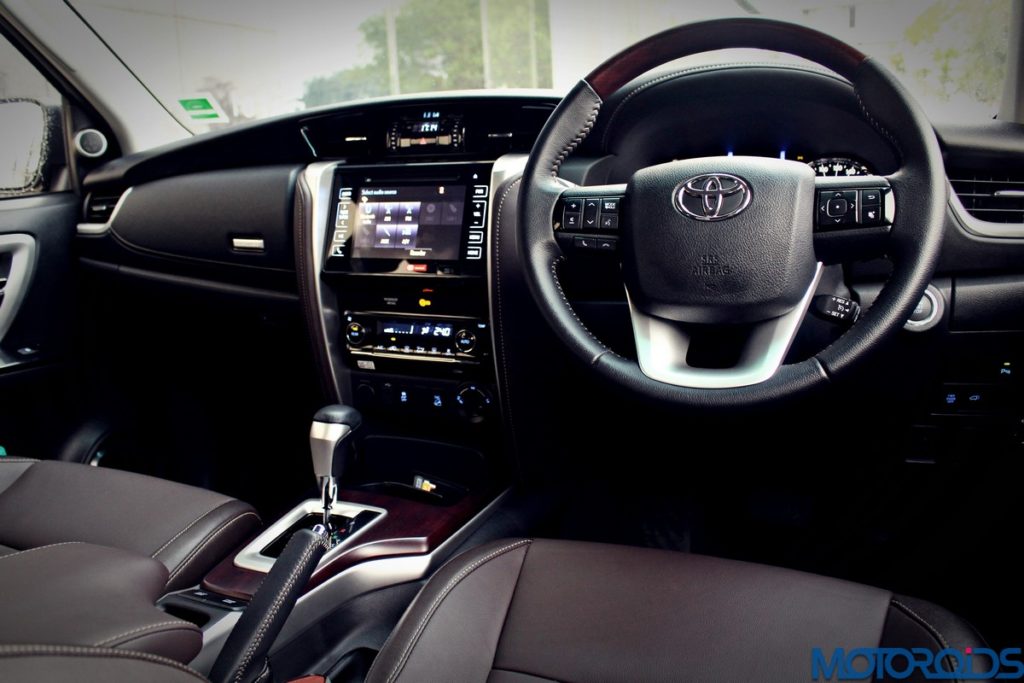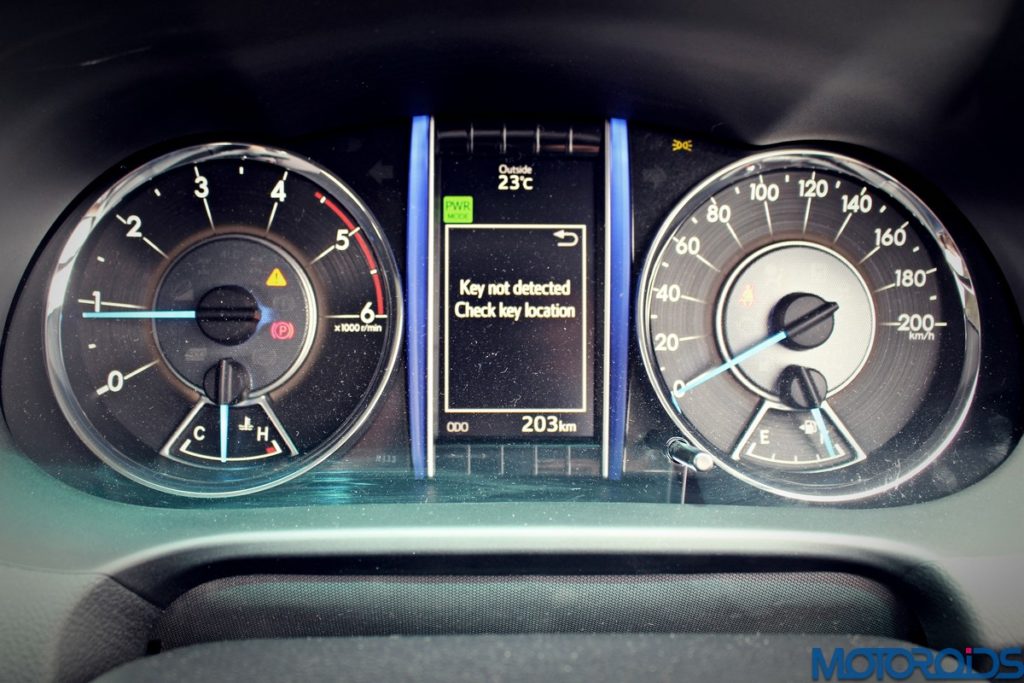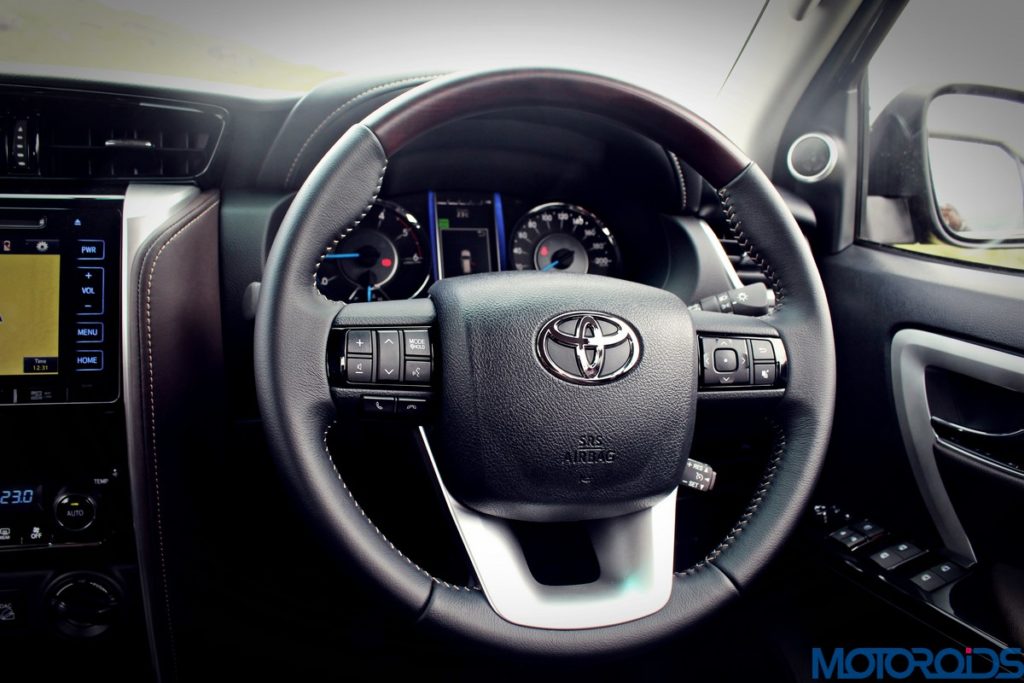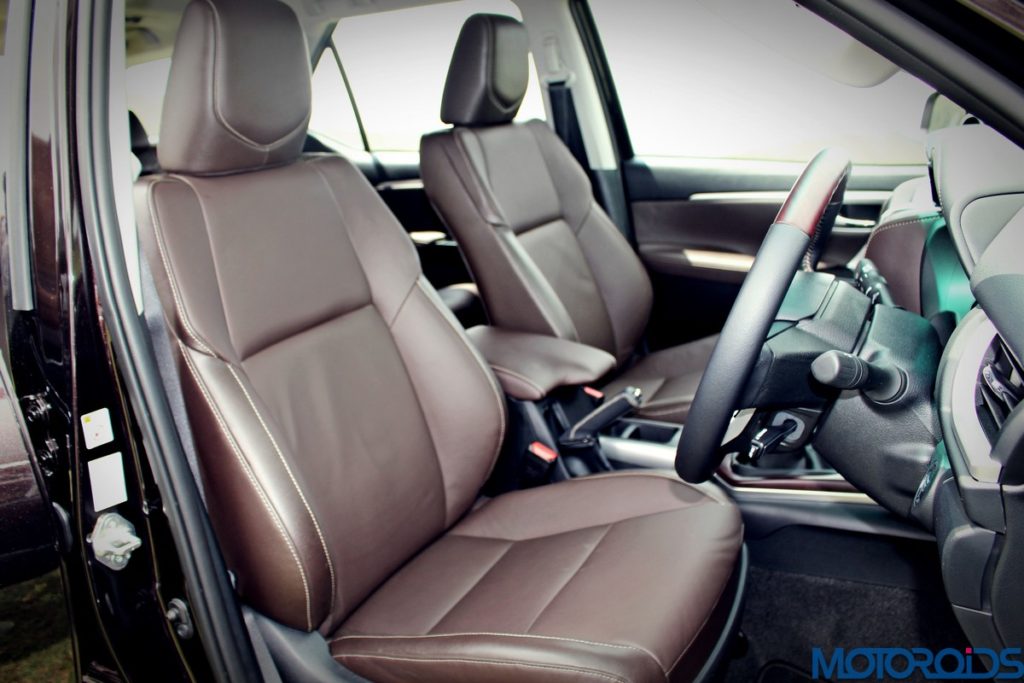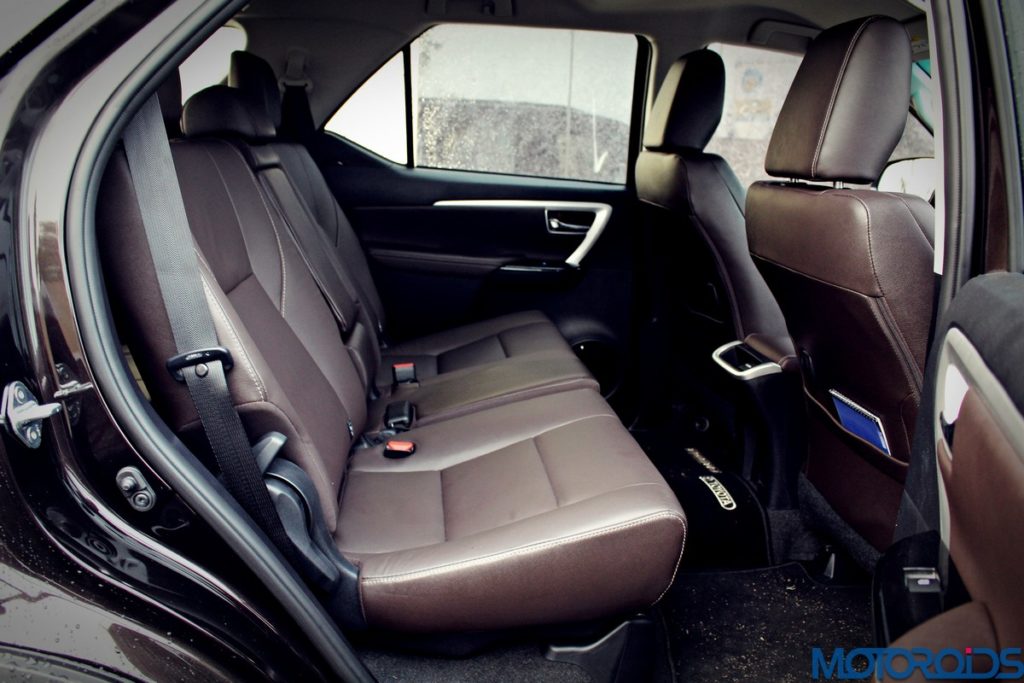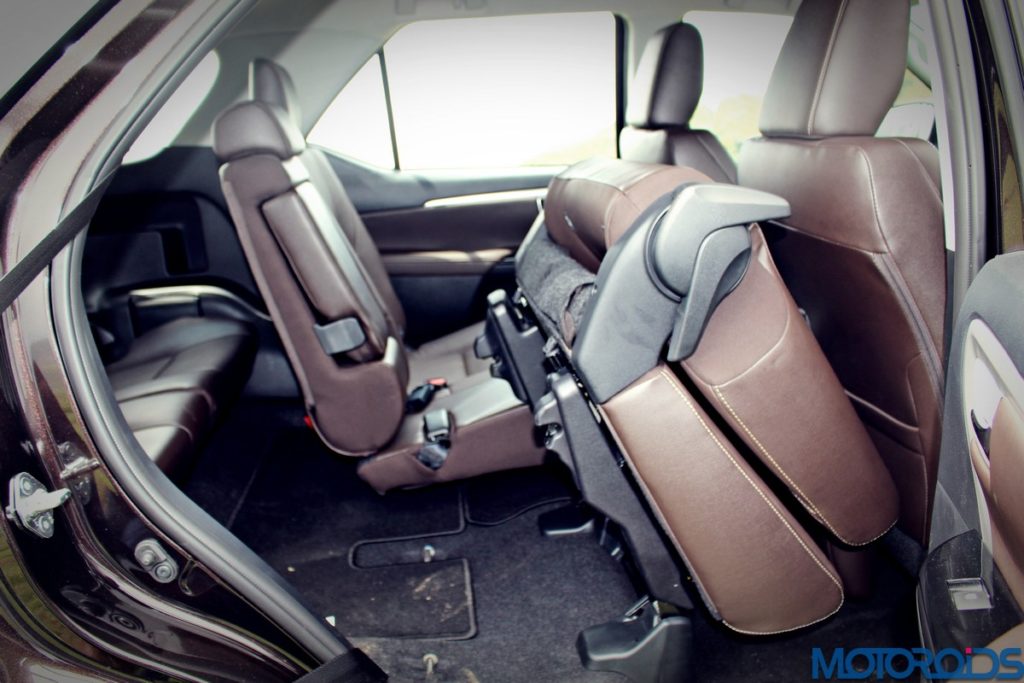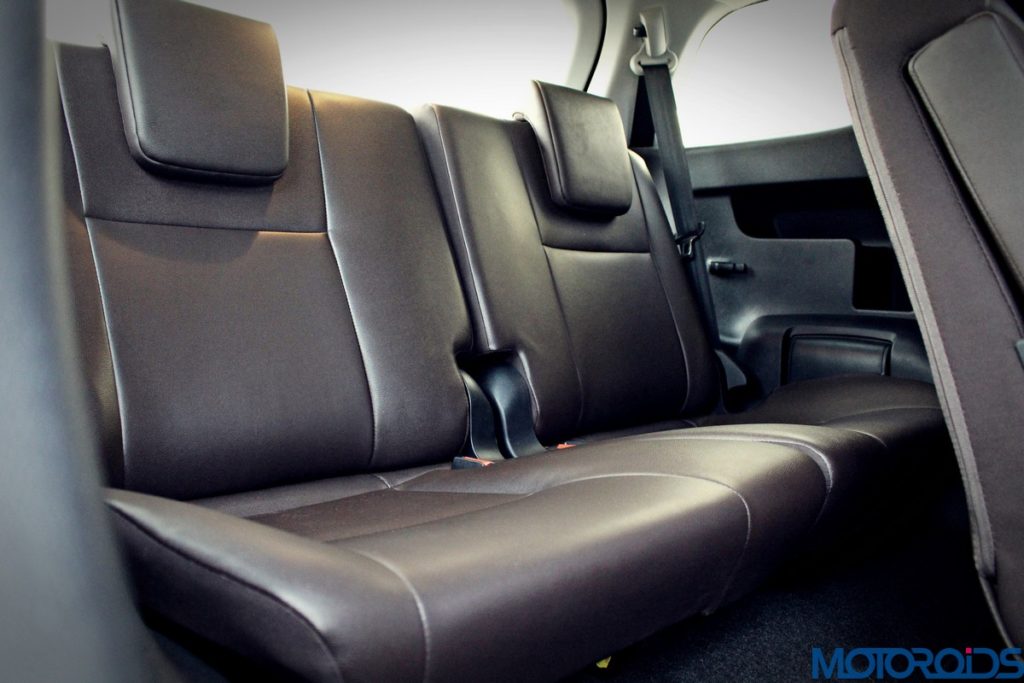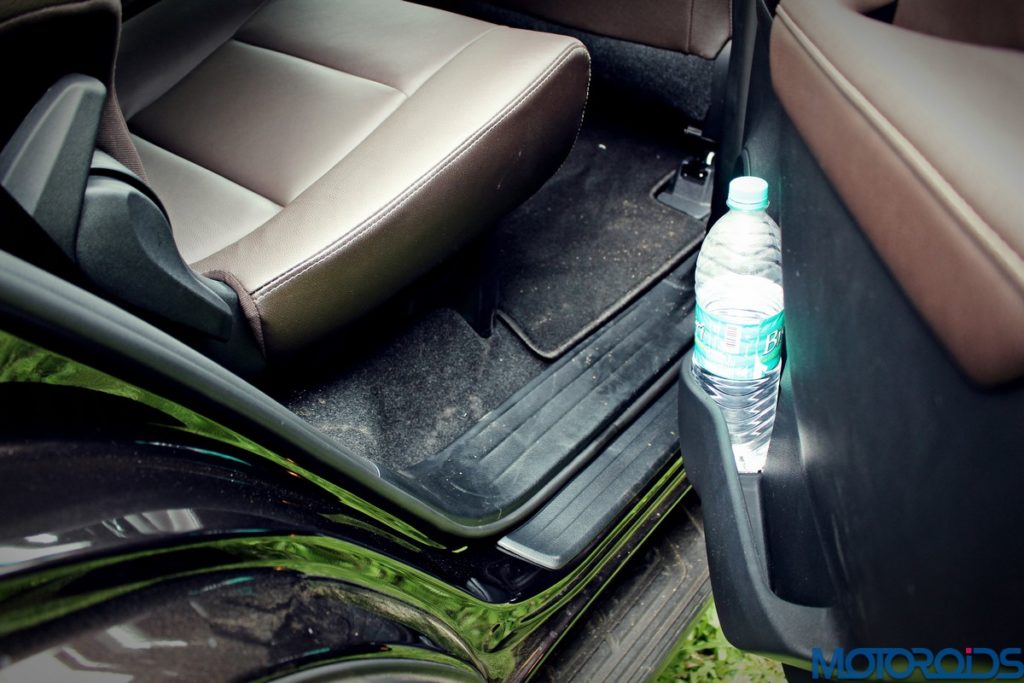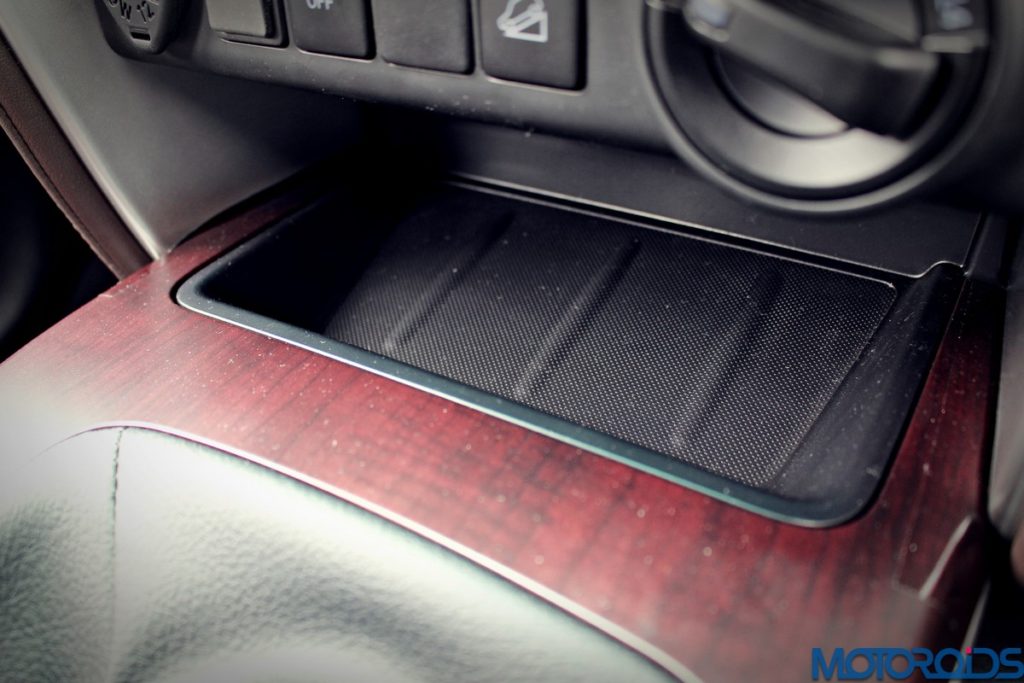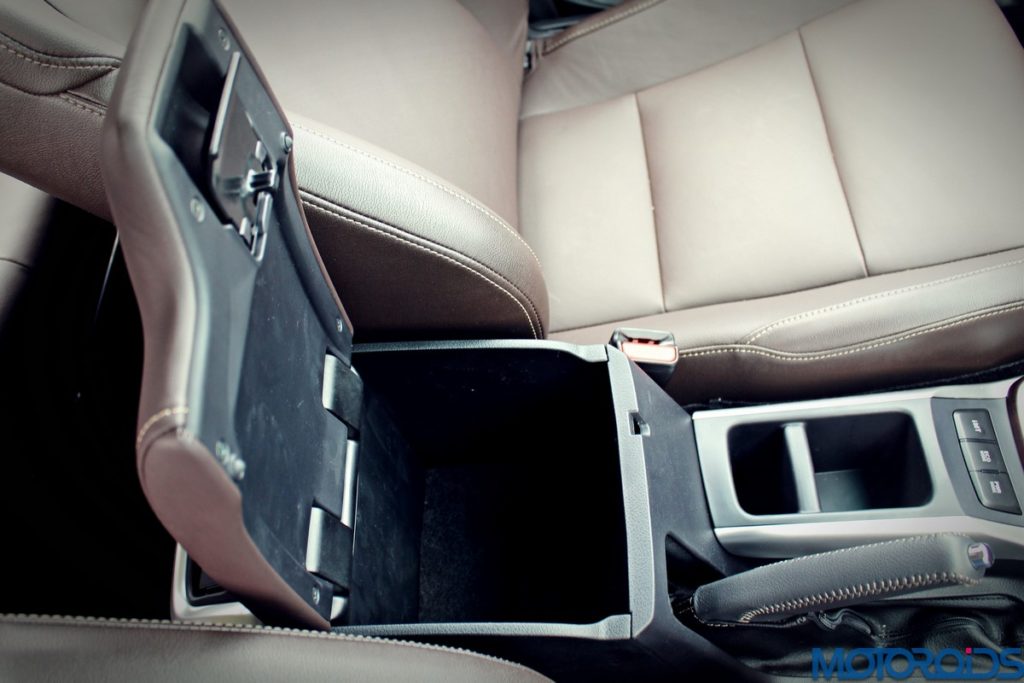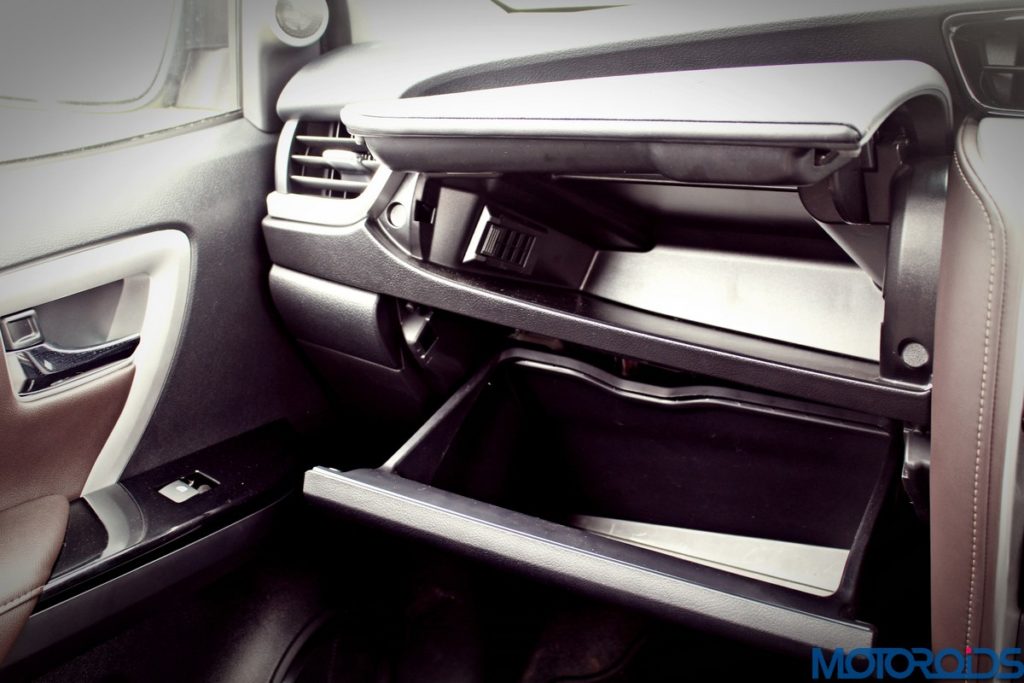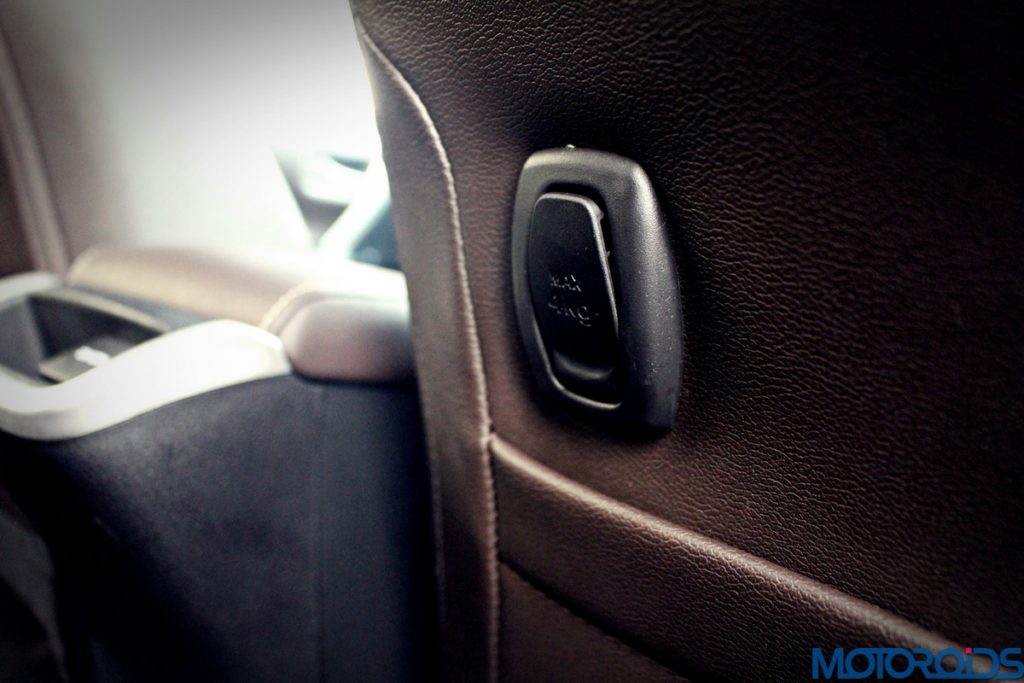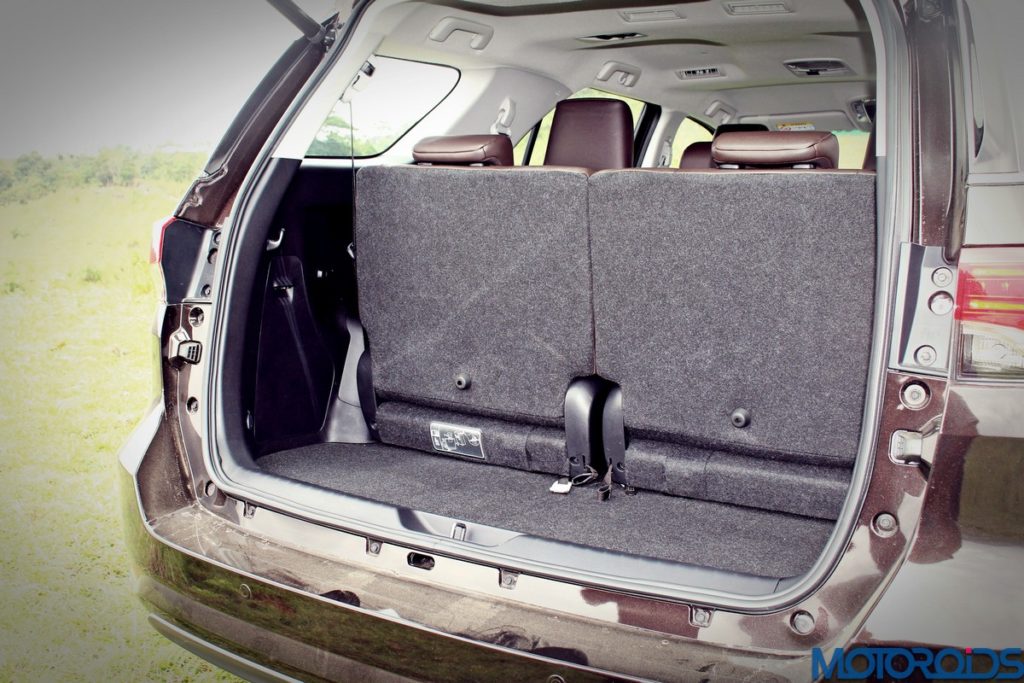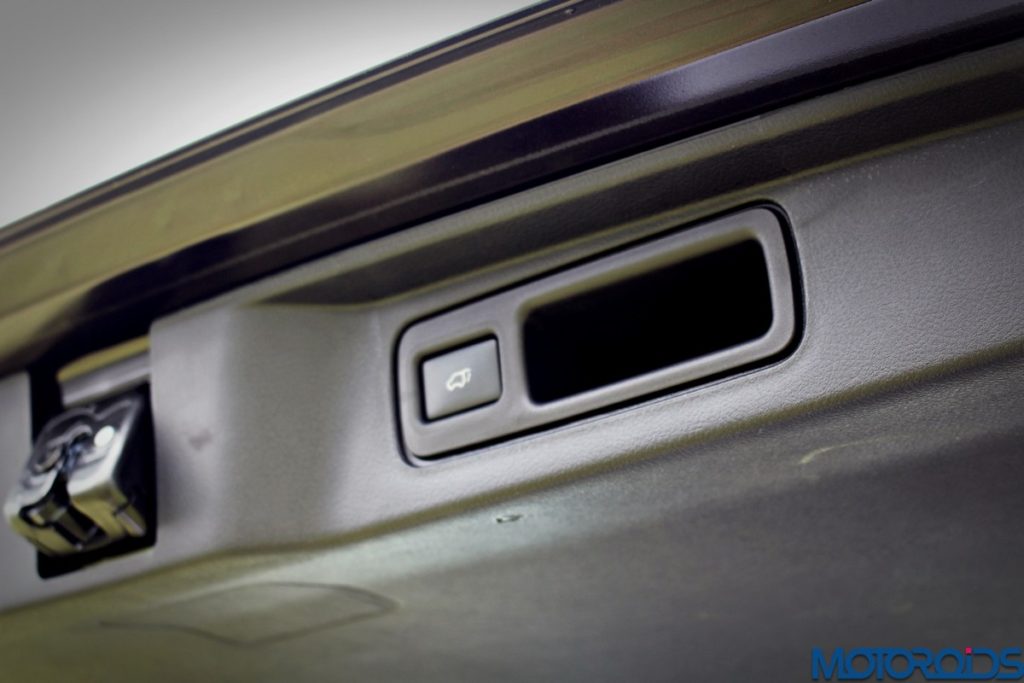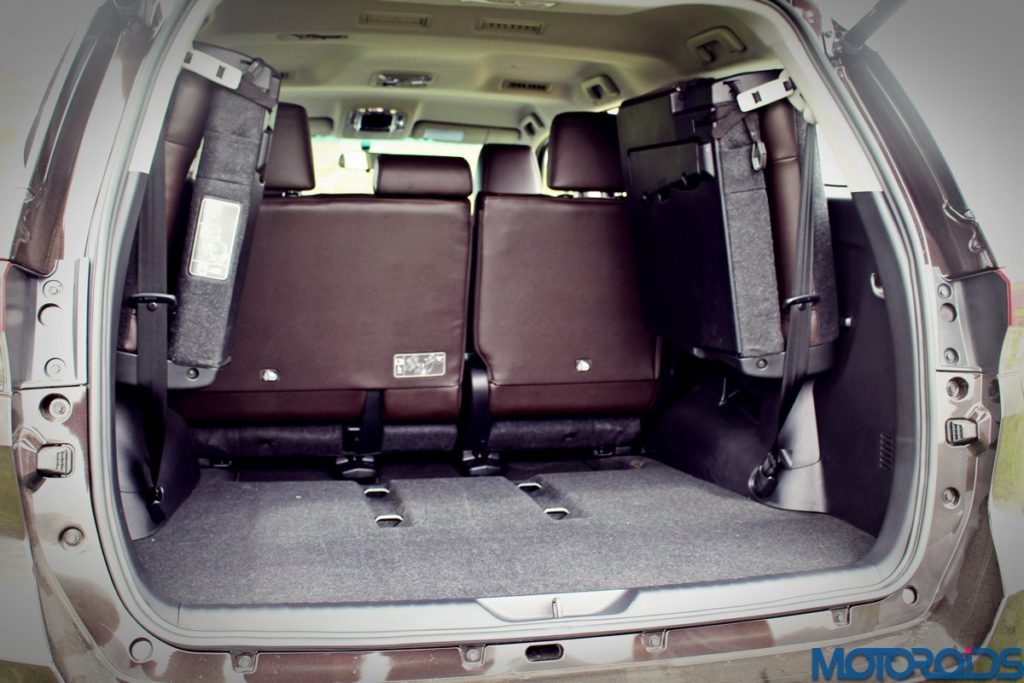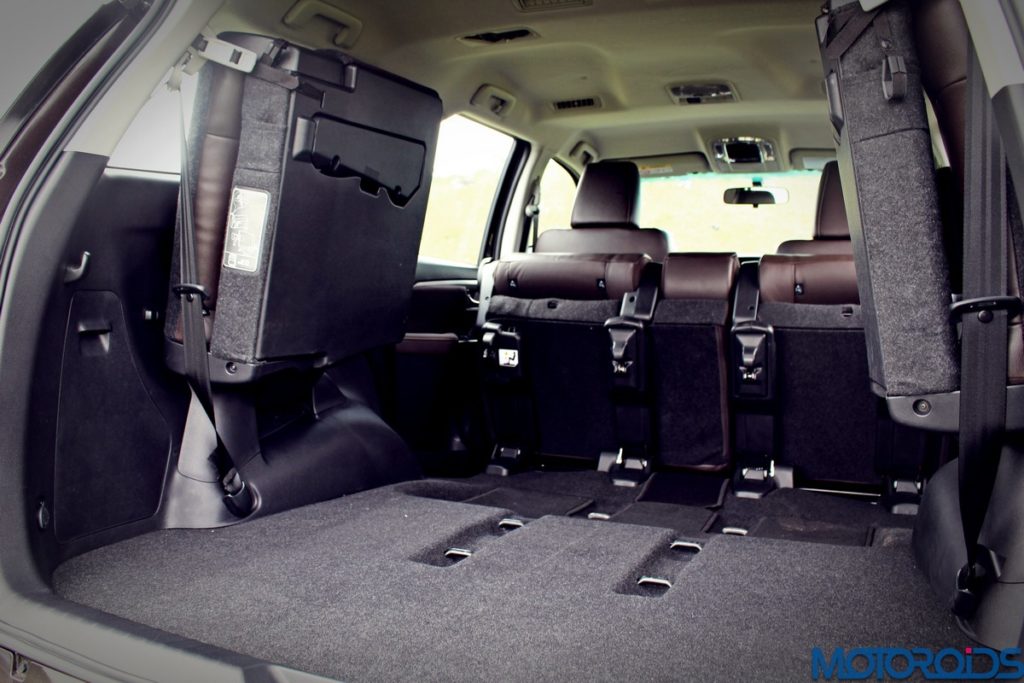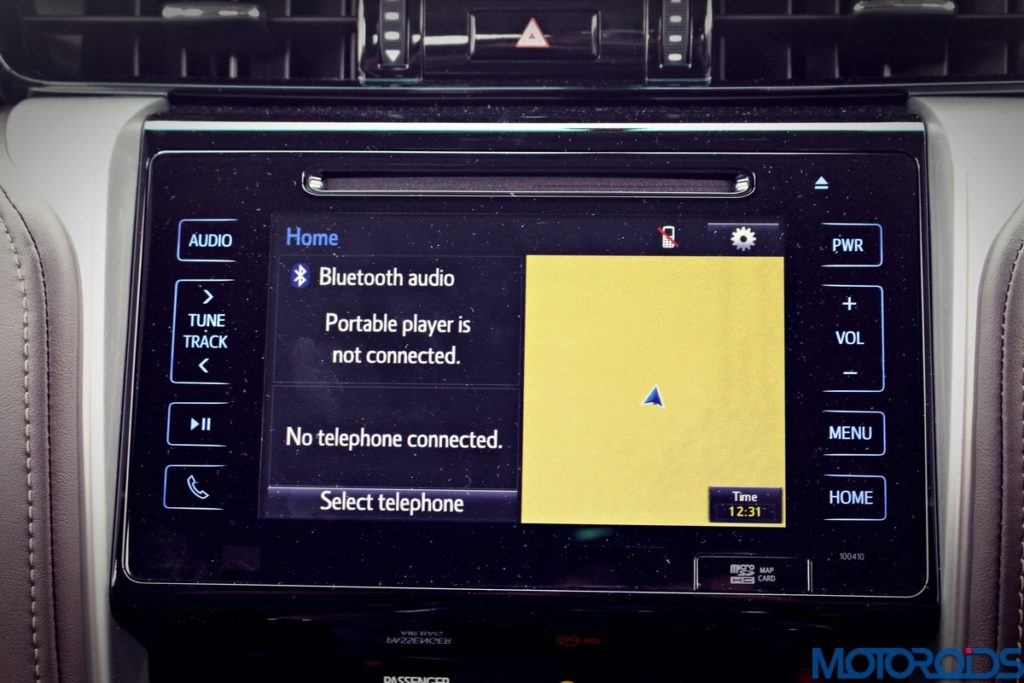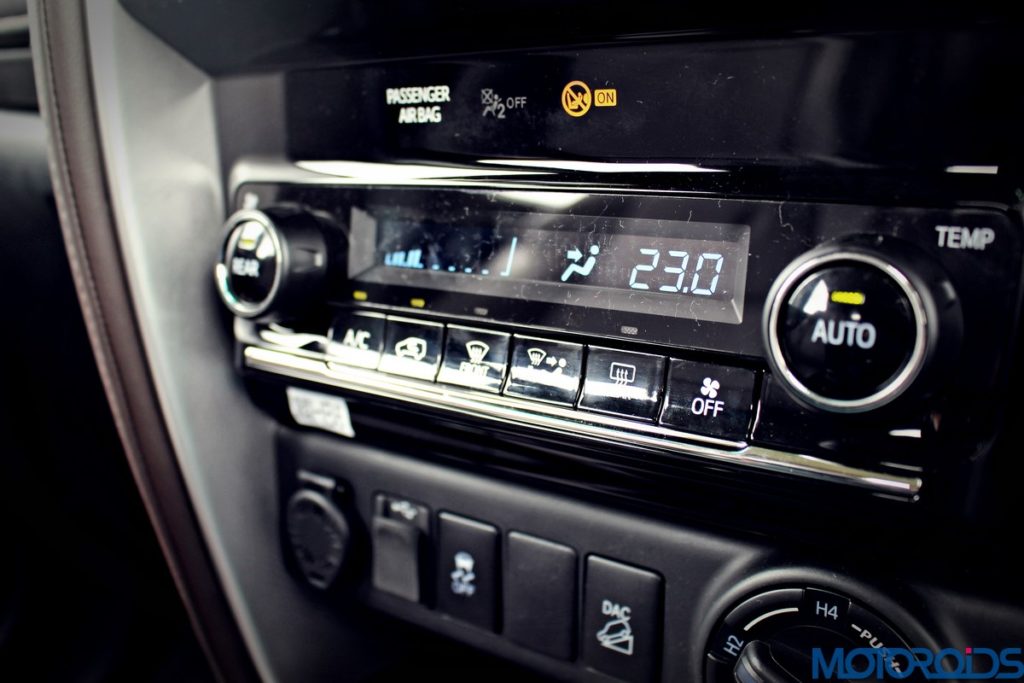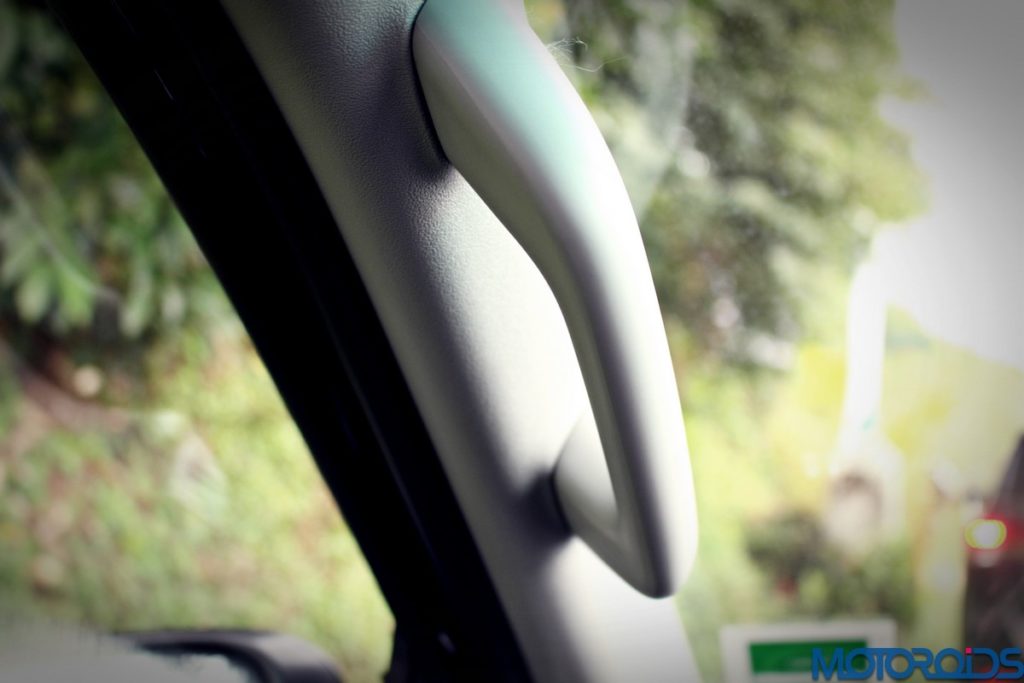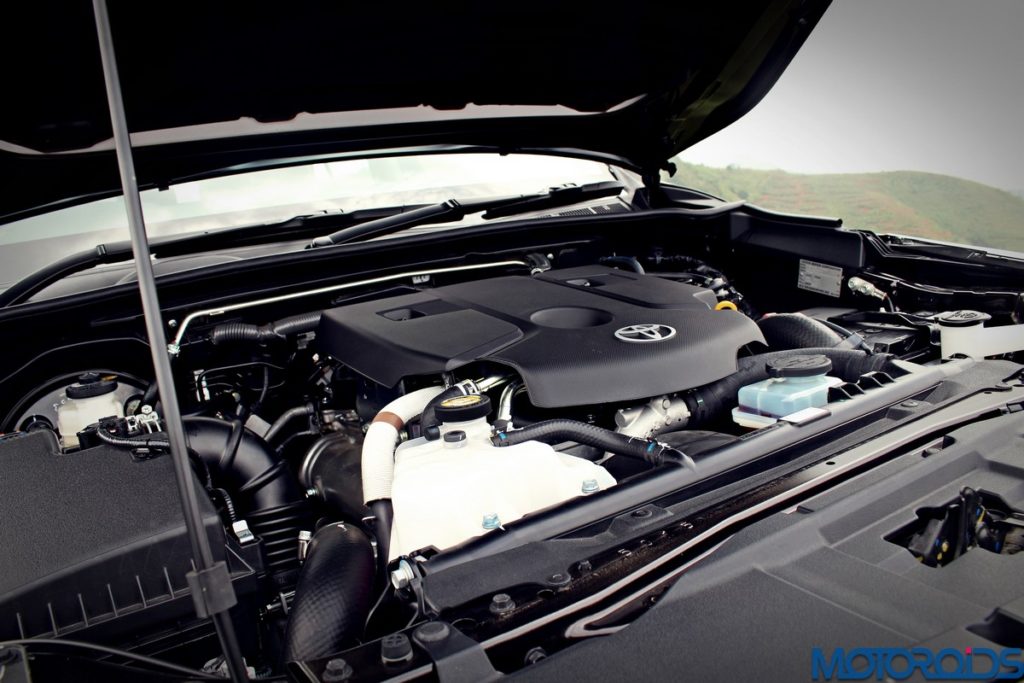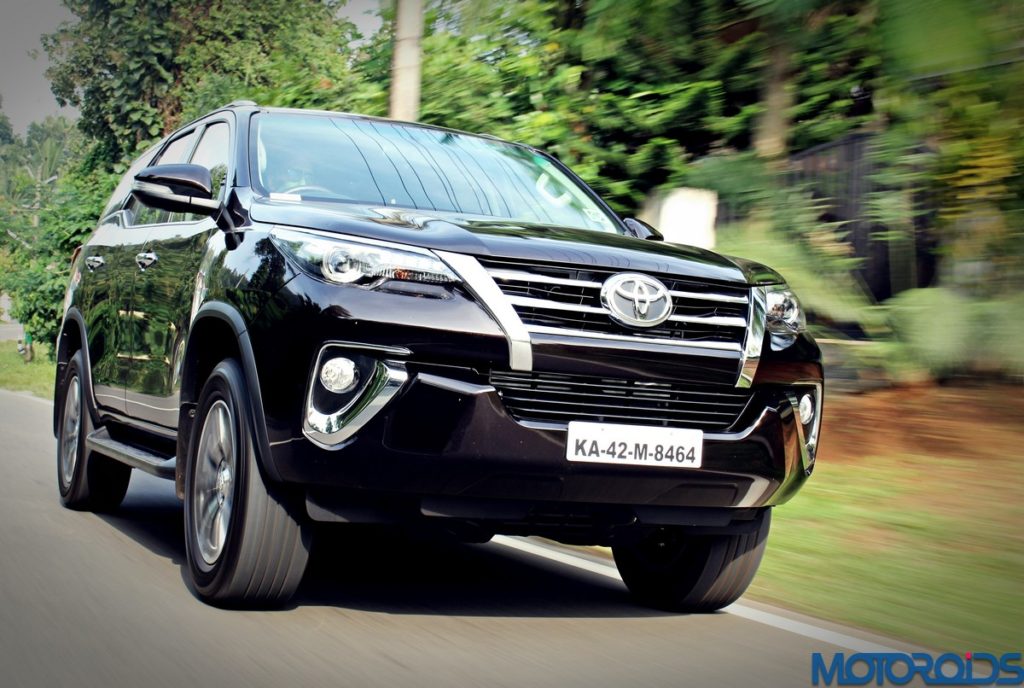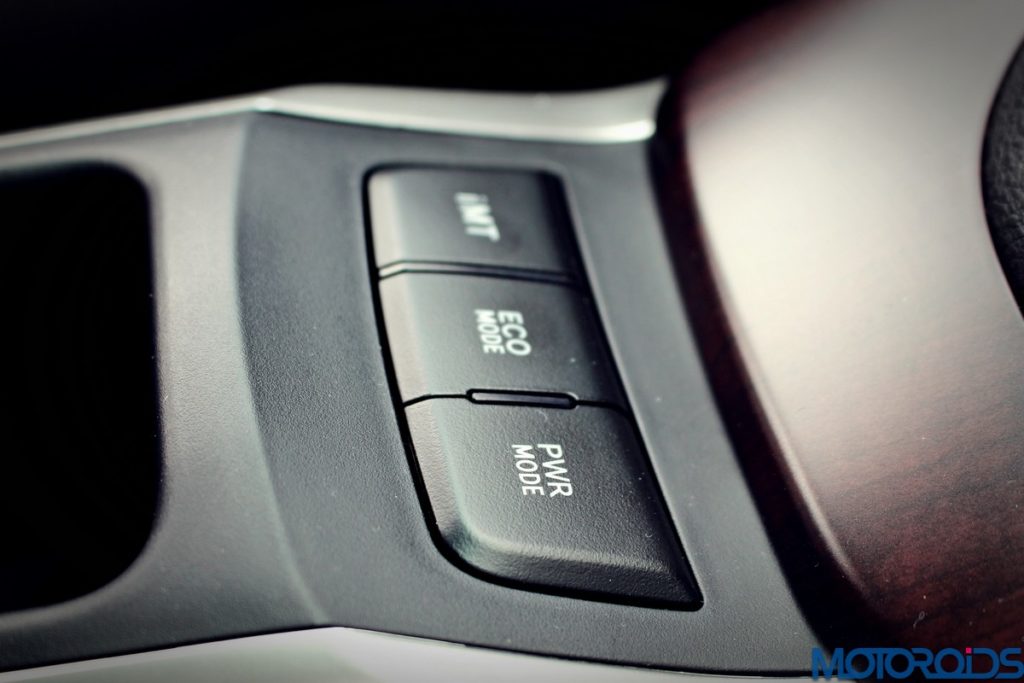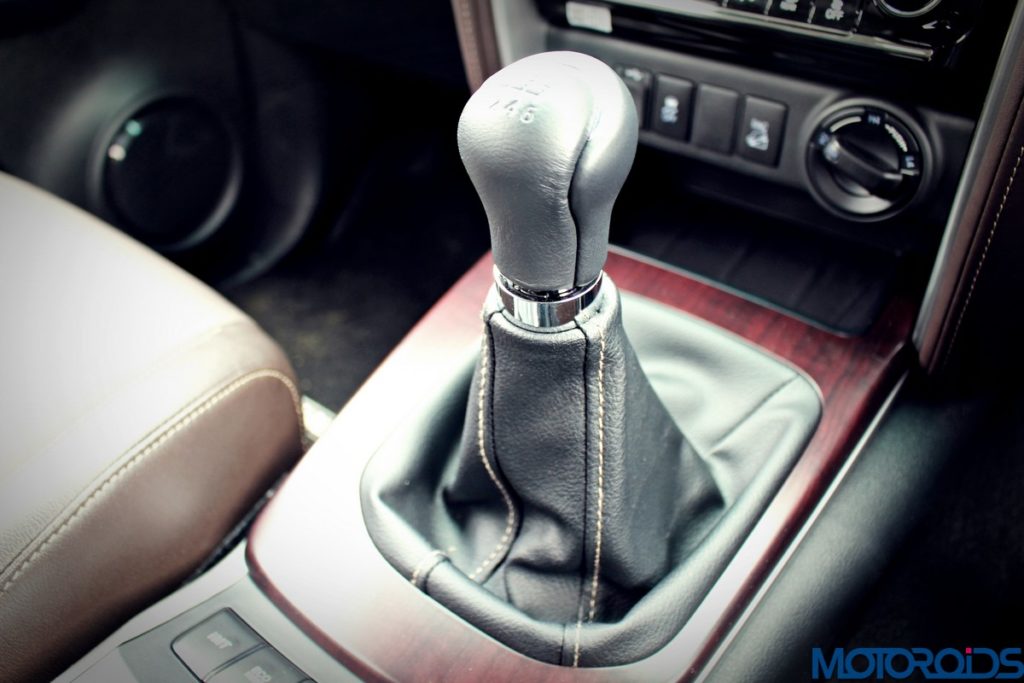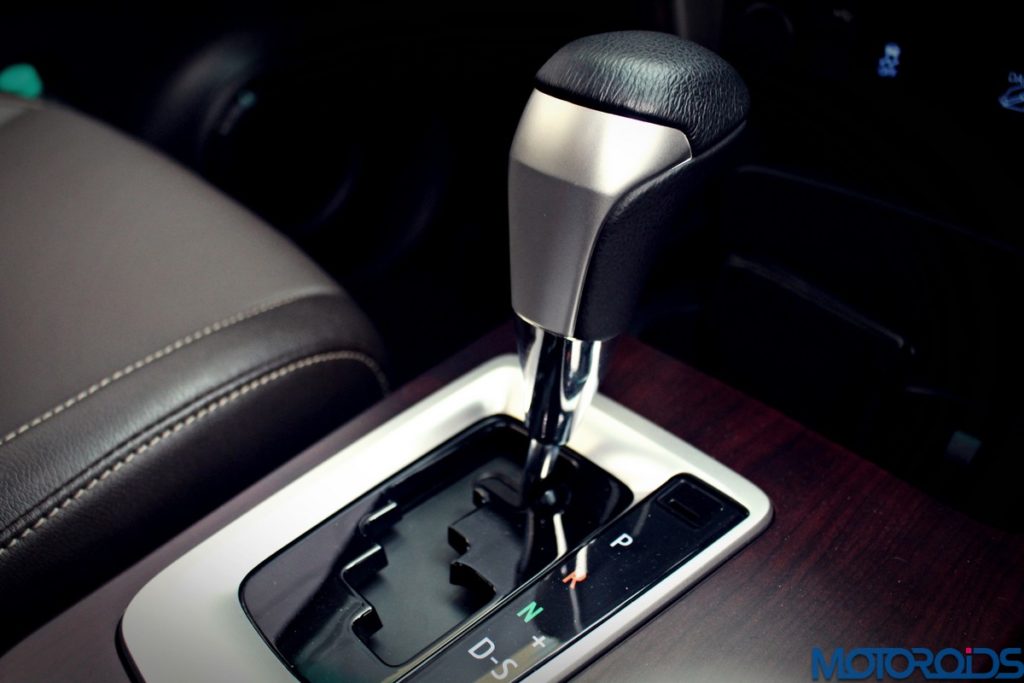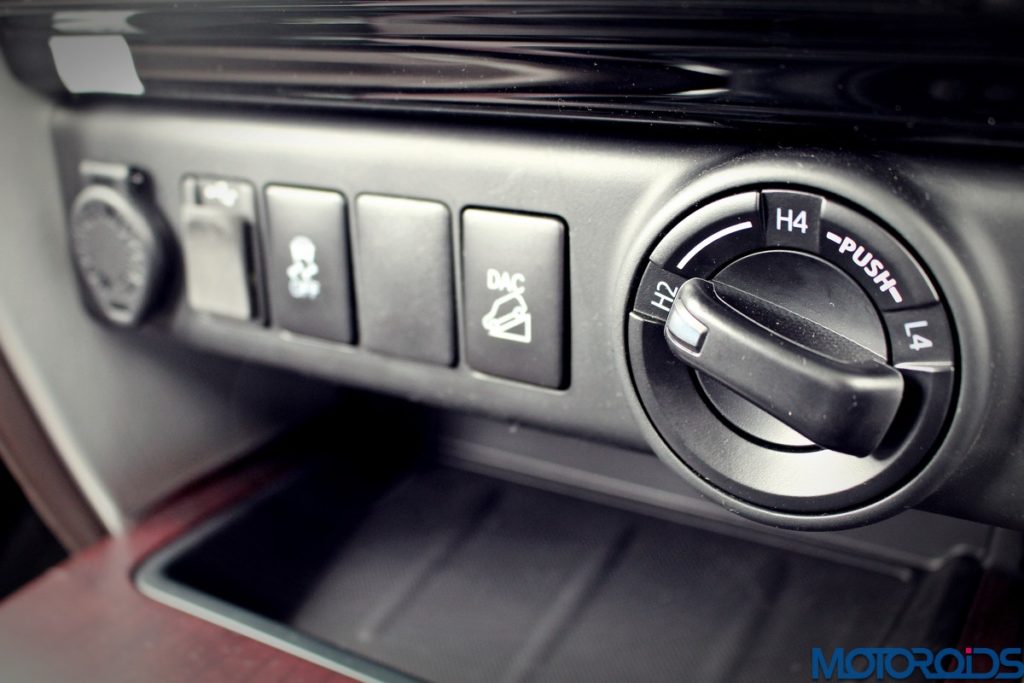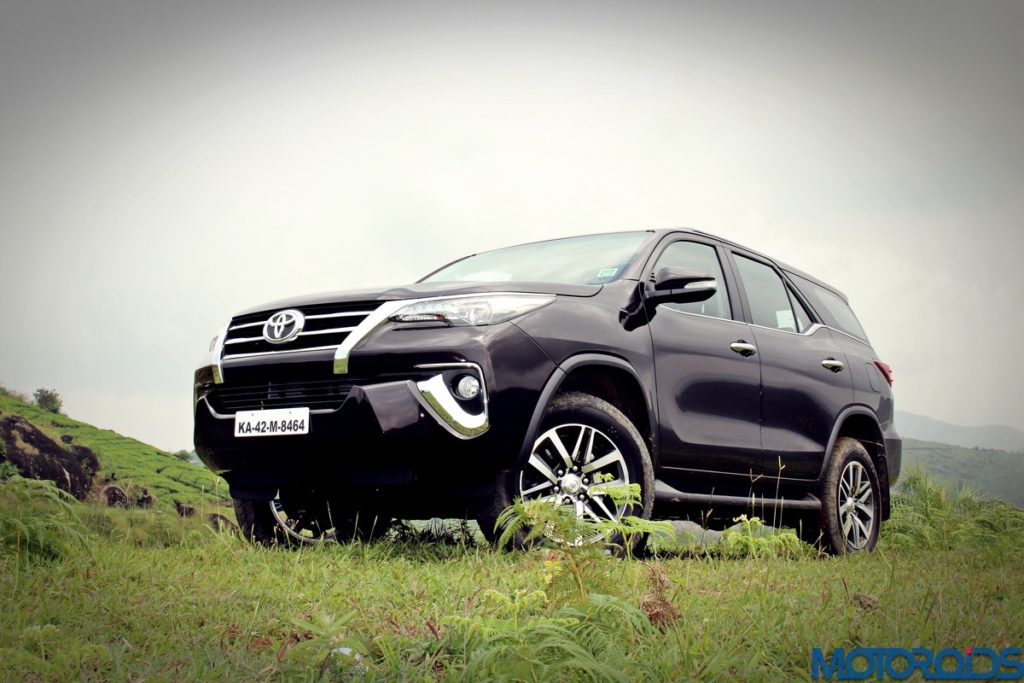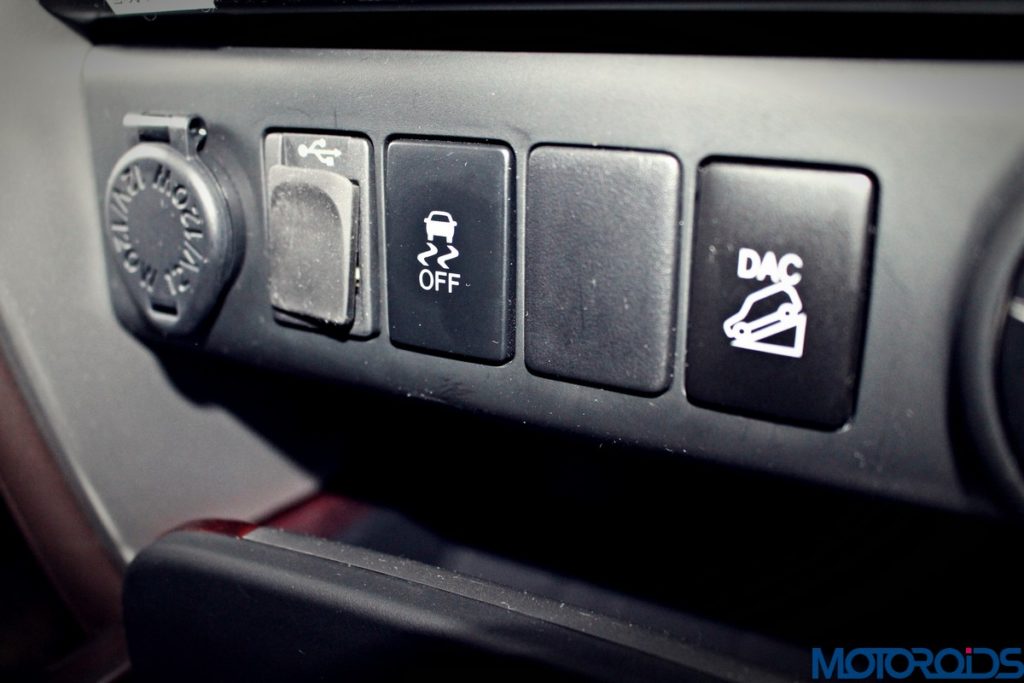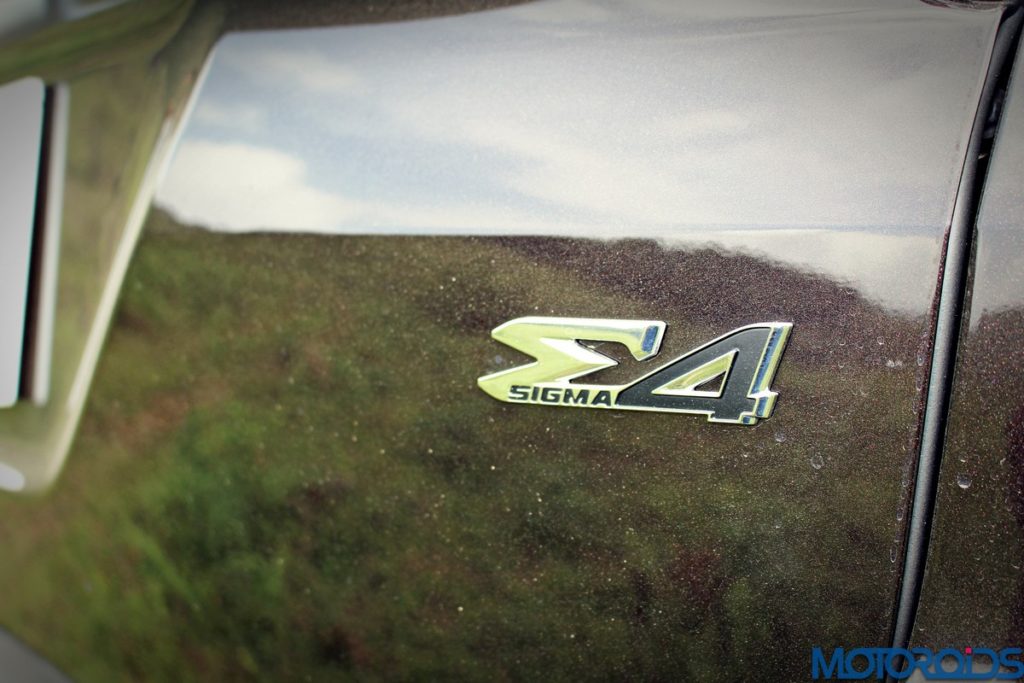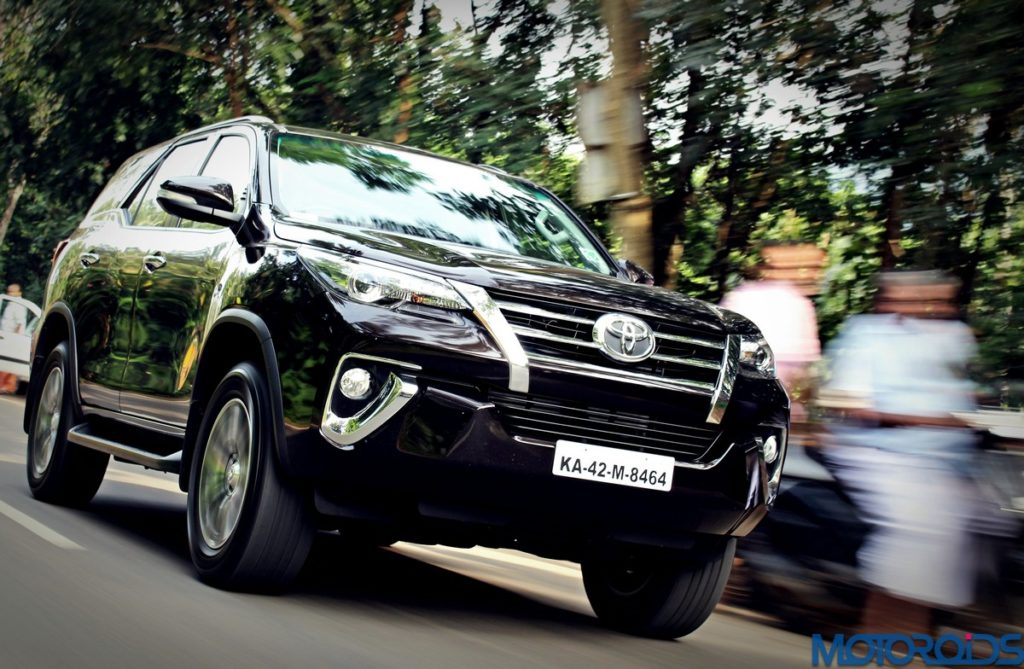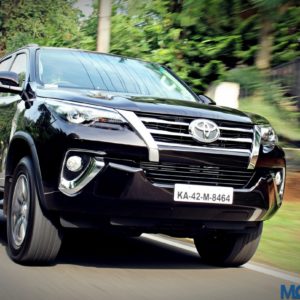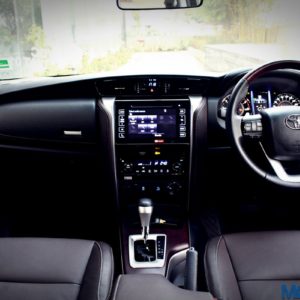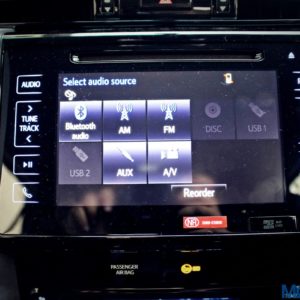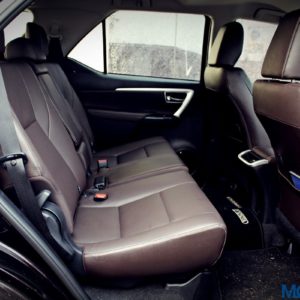In India, the Fortuner’s been a phenomenon. Maybe because sitting inside one makes you feel important. Maybe because it’s size becomes an extension of your ego. Maybe because it’s that misplaced thought that the hoi-polloi around you think you’re important if you’re seen in one. Whatever might be the reason for the T-Fort phenomenon, one thing’s clear – you feel a bit uplifted as you climb inside one, like it’s the perfect accessory to announce your somewhat respectable social standing. And I’m happy to report that the new one doesn’t disappoint while delivering that sensory experience of feeling less plebeian.
But there are a few more perspectives to the Fortuner phenomenon. The one that involves its legendary reliability, the one that involves the off-road taming genes that it inherited from the Land Cruiser, and the one that involves how it drives, or its ability to circle the globe without breaking much of a sweat. There’s also a discerning section of the SUV-loving populace that buy the Fortuner for the reasons cited above. The fact that they do feel important inside one is secondary, but the fact that they can escape society using one is primary.
It’s quite strange, isn’t it? A vehicle that some buy to get society’s nod of approval, while some buy it to escape certain social shackles by wandering off into the wilderness. Don’t get me wrong, there are a handful of other vehicles that deliver on both these counts, but none of them are popular as the Fortuner, while being ridiculously expensive at that.
New 2016 Toyota Fortuner Design And Styling
A Fortuner must look like it just caused a jail break by knocking out a few burly prison guards cold. Right? Wrong. There’s a new Fortuner in town, dripping with luscious, metallic paint, brightwork and curves that belie its ‘tough’ nature. You must be wondering why they’ve taken that call as far as the new Fortuner’s appearance goes. That’s because they wanted to mix ‘cool’ and ‘tough’ in one visual package. That’s understandable if your subject is James Bond, but with the Fortuner, I’m not quite convinced.
The size, the silhouette and the stance are that of a burlesque SUV that couldn’t have been a better representation of a next-generation Fortuner, but the details have gone soft. Straight lines in the bodywork are conspicuous by their absence. The snout is made of slim headlamps and a big chrome grille framed by blocks of chrome. An ear-to-ear grin tears across the front bumper, and in its wake, leaving gaps in the oddly shaped chromed fog lamp surrounds. From the side, the front end looks a bit ‘pinched’, like the nose of a bullet train, but does wonders for the front approach angle, which is rated at 30 degrees.
But here’s the best part – the slightly oddball looks do not stop the Fortuner from looking ‘important’. There’s that arrogance flowing through every inch of its bodywork, like the way it flows through your veins if you buy one to be on top of a small social tower. It does have presence, the new Fortuner, be it in the way its full-LED, ‘Bi-Beam’ headlamps pierce through the cars ahead, or by the virtue of its sheer size and chrome jewels.
New 2016 Toyota Fortuner Interiors And Features
The interiors are where the new Fortuner triumphantly overwhelms its predecessor. While the outgoing model’s cabin looked like the inside of a truck buffed to please the slightly uninitiated, the new model brings in nothing but much needed luxury. For the top grades, there’s dual toned leather (black and brown) with contrast stitching everywhere, on the door trims, the dashboard and even on the centre console. Then there are traces of wood here and there, slivers of chrome, other metallic accents, along with more leather. The dashboard’s design is quite contemporary, while the waterfall-like centre console proudly flaunts the 7.0-inch touchscreen and the leather trimmed edges.
The sense of space inside the new Fortuner isn’t that cavernous as that of inside the Innova Crysta’s cabin. One obvious reason being that the latter is a dedicated people mover while the former is a SUV. However, roominess feels less as compared to the outgoing Fortuner, as the roof appeared to be looming lower than before. This could be because the new Fortuner is a few millimetres shorter than the outgoing model, despite being longer and wider. Only a back to back comparison will attest to this, and expect more light on this issue as we take the car for an extended test sometime later. That doesn’t mean things are claustrophobic by any means.
The seating position is commanding and the view outside is plentiful, giving you a towering, above-the-road feeling. The massive, almost horizontal bonnet always hangs out in the line of vision like a ship’s bow from the Captain’s cockpit though. If you want to sink in a bit further into the vehicle, the Fortuner’s driver’s seat is eight way electronically adjustable. But for me, driving this sort of a vehicle always calls for sitting as high from the road as I can get, and look down on the minions, and thus, feel less plebeian. The top of the high-set, upright dashboard has a smaller area than most modern cars, because the scuttle and A-pillars of the Fortuner are pushed back; typical of truck architecture. So, there’s very less dashboard to view, a lot of bonnet and then the road. Personally, I like that kind of a setup better than trendy, cab-forward designs, as it gives a sense of purpose to driving a true-blue SUV.
Instrumentation is nice, with chunky dials on either side and a 4.2-inch TFT multi information display (MID) in the middle. This display is remarkably comprehensive, and shows information like fuel consumption, cruising range, average speed, elapsed time, ECO drive indicator and ECO score (referring to the driving modes), outside temperature, navigation display, audio display, phone caller display and warnings; more like a watered-down version of Audi’s Virtual Cockpit feature.
The steering wheel is wood and leather trimmed, laden with controls for audio/telephony and the MID. It is to be noted that the this is not the steering wheel that’s found inside the Innova Crysta, and an entirely different (and thankfully smaller) unit altogether. It’s still a good unit to hold, and I think its sized just perfectly for the car. The steering column is tilt and telescopic adjustable.
2016 Toyota Fortuner Seats and space
The front seats are big, comfy and supportive, giving no cause for concern as you sink into them with your elbows blissfully resting on the leather on the door pads. The seats aren’t the thickest in the business though, but that doesn’t make them any less comfortable.
The same can be said about the rear seat, a bench with a 60:40 split and a central armrest that can be dug out from the backrest. While the backrest felt a bit upright, legroom in the second row is plenty, while three occupants sitting abreast on the bench won’t be too uncomfortable either. However just ‘stick’ to short journeys in case you’re one of them. Legroom in the second row is good, but not great. Six-footers sitting upright will certainly feel the headliner (scooped) if they must scratch the top of their heads. They won’t mind though, as the headliner is quite nicely trimmed.
Access to the third row is via tumbling the second row which is a convenient, one-touch operation.
The third row, obviously, is the least comfortable place to be in, but not by much. The seat is flat, but legroom is decent if you’re not looking to spend more than a couple of hours, as there’s no space to stretch your legs beyond a certain point. The window-line sharply rises before the third row though, being a spoilsport when it comes to enjoying the view outside. The feature also leaves quite a bit of hard plastic areas for your sad elbow, but at least they’re dug out in the middle to store a 1-litre water bottles and maybe a paperback.
The door pockets store 1-litre bottles without fuss, but there’s a bit of an ergonomic anomaly here. It involves fetching the bottles from the rear door pockets while the door is shut. You must bend your arm in ways you’ve never done before to reach the bottles as they disappear between the seat and the doors. Ideally, the positioning of the bottle holders in the door pockets of the rear door should have been where the speakers are, but that doesn’t seem to be the case here.
Apart from that small bummer, interiors space is abundant, with a convenient place to slide in your wallet or smartphone at the bottom of the centre console, a cooled glovebox with a nice, click-Fortuner-logo-to-open operation, a big cubby hole between the front seats, and various crevices in the interior trim all around to store inanimate objects that you don’t need too much in life.
The front seats also have these handy, 4-kg hooks integrated into their back sides.
With the third row in place, there is 200 litres of cargo volume on offer (to the roof).
The rear door is manually operated on the lower variants, while the range topping variant gets a motorised rear door with a memory function.
That space increases to 716 litres with the third row folded away..
..and opens to an impressive 1080 litres with the second row folded and tumbled out of the way.
The new Fortuner gets a 7.0-inch touchscreen equipped infotainment system that bundles DVD, Bluetooth, Aux-in, remote control and voice tag (only for contacts) features, apart from an in-built navigation feature, which worked well during the drive, with fast and precise route recalculations. The screen’s capacitive touch is responsive, unless your fingers are too excited for your own good, and includes a flick and drag function. The capacitive touch buttons around the screen however, could have been more responsive. Sound quality through the 6 speakers feels average.
Other notable features on the new Fortuner include keyless entry, push start/stop button, automatic AC with roof mounted vents for the seconds and third rows, speed sensing auto lock, cruise control, seat back pockets, auto up/down power windows, ‘dusk sensing headlamps’, door courtesy lamps, dead pedal, and three 12V DC ports (in addition to a 100W, 220V power socket). The second row contains two ISOFIX points and three top-tether hooks, along with a roof mounted seat belt for the centre passenger.
Handy features like small grab handles in the A-pillar for make the Fortuner a versatile package. The new Fortuner lacks features like ambient lighting, a sunroof, rear sun blinds and rain sensing wipers.
New 2016 Toyota Fortuner Engine and Performance
The 2016 Toyota Fortuner is powered by a 2.8-litre four-cylinder turbocharged diesel engine (2GD) that 177PS of power and 450Nm of torque (when mated to a six-speed automatic transmission, or 420Nm with the six-speed manual). For the first time, the Fortuner is also available with a petrol engine – a 2.7-litre, naturally aspirated, VVT-I unit that produces 166PS of power and 245 Nm of torque, while being mated to either a 5-speed MT or a 6-speed AT. I only sampled the diesel variants.
Crank up the motor at there’s that characteristic diesel rumble as the pistons begin their up-and-down motions and the transmission judders as the cold flywheel slaps it from its sleep. The gear lever does its characteristic jig, and the drive-train wakes up from its stupor.
NVH levels are good, but not impressive. The cabin is somewhat secluded from the engine’s business, but you’ll be constantly aware of its presence. There are no vibrations to report that seep in through any of controls, except for the gear lever, which likes to massage your palms a bit occasionally.
Pulling away, the engine starts to show its muscle courtesy its torque rating. There is a very mild turbo lag to be felt below 1700-1800 rpm, but once the engine winds up, progress is linear and acceptable for the vehicle’s size. And weight. Because the new Fortuner weighs the thick end of 2.7 tonnes [2610 kg (2WD); 2735 kg (4WD)].
Drivability is effortless, and the engine never feels stressed out in everyday driving environments. It’s got a meaty mid-range that extends all the way to highway cruising speeds, so you’ll never run out of torque unless you’re driving the new Fortuner like it wasn’t meant to be driven. Part throttle responses are satisfying if you consider the girth of the vehicle. And the weight. I’m yet to see how the engine will respond with a full load.
Then there are the PWR and ECO modes, which mean that throttle response and engine performance can be dulled down to extract more fuel efficiency, or sharpened for sporty driving. The modes clearly make their presence felt, and its best you stick to the powerful mode for those close overtakes.
With the new Fortuner, expect leisurely cruises with the engine lazily ticking away and the big, 265 section tires gobbling up the miles with ease. I didn’t get a chance to be behind the wheel for an extended period due to the short nature of the media drive, so I have to keep the driving experience short. But does it feel quicker and long legged than the outgoing Fortuner? It most certainly does.
When it comes to the MT, the clutch is light, although the cogs felt they still needed some time and miles to settle in. However, the MT does have a nifty trick up its sleeve and it is called the iMT. This feature rev matches the engine with the transmission by automatically blipping the throttle during downshifts, thus allowing for smoother cog transitions that can be distinctly felt as the drive-train goes down a gear without baulking the vehicle. It effectively simulates a perfect heel-toe action at each gear change, making you look like a much better driver than you are. In due course, I’m sure it’ll save the transmission a lot of wear and tear as well. It’s a slick feature, and makes the rather utilitarian drive-train a smoother operator. If you’re not up for it, you can just turn it off.
I also tried the AT variant, which turned out to be predictably well-mannered, unless you push it. The 6-speed auto box is fairly smooth, and rarely confused. That said, it does make the engine struggle a tad (you can hear it), and that’s why they upped the latter’s torque rating to 450 Nm. It isn’t no slouch either, and somewhat lag free as well, because the AT keeps the engine in the meat of its powerband most of he time. Straight line performance is evenly matched with the MT variant. There’s a sportier S mode that holds onto the gears longer, while you can shift manually using the gear lever, or, for the first time on a Fortuner, via steering mounted paddle shifters. That don’t seem to respond during spirited driving.
As I gunned the vehicle in 3rd gear and flicked the right paddle hoping for an upshift, nothing happened. Or did it? Because the MID showed that I had already reached 6th gear (what?!) but the engine sounded as if it were still boiling in 3rd. I tried doing the same procedure again and again, but the results weren’t any better. Under normal driving circumstances however, the paddles work just fine, as a flick on either causes gear changes that aren’t the fastest, but smooth enough.
New 2016 Toyota Fortuner Ride And Handling
With the new generation, the Fortuner’s legendary off-road ability seems to have been kept intact. Built on the HiLux’s body-on-frame underpinning, the new Fortuner was engineered with the same four-wheel drive equipment, but with a coil-sprung suspension setup at the rear instead of leaf springs.
At the heart of the matter is a switchable four-wheel drive system, that is available exclusively with the diesel engine in both MT/AT configurations. The driver can switch between a two- and four-wheel drive high-range mode and a four-wheel drive low-range mode. Additionally, a manually lockable rear differential and hill-descent control round off the rough road ready arsenal.
Although the rocky trail with the occasional slush pass that we drove on was no match for the new Fortuner’s off-road ability, we got a taste of its prowess. In fact, we stayed in 2WD mode all the time. Most of the so called off-road course was covered with loose rocks (some large) and featured both flat and mildly inclined terrain. All throughout, the chassis offered excellent communication through the controls, while the impressive 225mm ground clearance helped ensure all rocks were missed with ease. A 30-degree approach angle and 25-degree departure angle meant the new Fortuner had no issues with front and rear clearance as well, while a 700mm wading depth also positions it as one of the segment leaders in terms of water fording.
With the Fortuner in its rear-wheel drive mode, I snaked through the switchbacks that led to a 2,000-acre tea plantation that nestled in the heart of Vagamon Hills in the Idukki district of Kerala. It was difficult to concentrate on anything apart from the lush tea plantations playing hide and seek with the mist, but I found the car to be quite settled.
With the traction control switched off and exiting a switchback under high throttle, the new Fortuner’s rear does tend to slip a bit, but things remain controllable and predictable. With the traction control on, it quickly nips any slip in the bud, making its presence felt by flickering the light on. Just in case, there’s stability control to keep things in check all the time.
The new Fortuner isn’t no sports car, but its handling is manageable through corners. Yes, there is body roll given its tall stance and high centre of gravity, but not upsetting amounts of it. That’s partly thanks to the front and rear sway bars that help keep body roll in check. Steering feel through the hydraulic rack is vague off centre, but it loads up nicely when tackling corners, which makes it easy to place the big car on the road.
Ride quality is on the firmer side, but the new Fortuner’s tried and tested suspension setup soaks up pot holes and undulations with aplomb. Low speed ride is noticeably jiggly, as smaller imperfections on the road impact the ride and upset the feel in the cabin at times.
New 2016 Toyota Fortuner Safety
The new Toyota Fortuner packs a comprehensive safety suite that packs Electronic Brake Force Distribution, Electronic Stability Program, Hill Holder, Traction Control System, dual front airbags, Anti-lock Braking, head airbags, protective glazing, side airbags, front seatbelts with pre-tensioners, Alarm System/Remote Anti Theft, and an engine immobiliser. The vehicle is also built around an impact absorbing structure with pedestrian protection support.
New 2016 Toyota Fortuner Buying Advice
Does the new Fortuner run rings around its predecessor? It does. While I’d still prefer the butch looks of the outgoing model, the new one does most things better than the outgoing model. Drivability and straight performance has noticeably improved, apart from the ride quality which remains firm. The interiors are way more upmarket, while the gamut of new features make it quite competitive.
Talking of being competitive, speculations were rife that the new Fortuner would cost a bomb. But hey, it doesn’t. You can pick one up for as much as INR 26 lakhs, which is very, very competitive pricing indeed. Yes, the still-to-be launched Tata Hexa comes close to the new Fortuner in terms of abilities, especially the AT variant, and offers more value as well, but the wraith of the Fortuner continues.
With prices starting from INR 25.92 lakh (for the 2.7L petrol 2WD) and going all the way to INR 31.12 lakh (for the 2.8L diesel AT 4WD), the new Toyota Fortuner is fair amount of car for the money. Being more rounded in its abilities with this generation, along with the competitive pricing, the new Fortuner is days away from being a runaway success.
New 2016 Toyota Fortuner Prices
Petrol
| Sl. No. | Grade | Transmission | Ex-Showroom Price |
|---|---|---|---|
| 1 | (2.7L) 4×2 MT | Manual | 25,71,300 |
| 2 | (2.7L) 4×2 AT | Automatic | 27,34,600 |
Diesel
| Sl. No. | Grade | Transmission | Ex-Showroom Price |
|---|---|---|---|
| 1 | (2.8L) 4×2 MT | Manual | 27,27,000 |
| 2 | (2.8L) 4×2 AT | Automatic | 29,53,400 |
| 3 | (2.8L) 4×4 MT | Manual | 29,71,10o |
| 4 | (2.8L) 4X4 AT | Automatic | 31,47,500 |
New 2016 Toyota Fortuner Technical Specifications
| Engine | DIESEL | Petrol |
|---|---|---|
| Fuel Type | Diesel | Petrol |
| Displacement | 2,755 cm3 [cc] | 2,694 cm3 [cc] |
| Valve Train | Double Overhead Camshaft [DOHC], 16 -Valve | Double Overhead Camshaft [DOHC], Dual VVTi, 16-Valve |
| Charging System | Variable Nozzle Turbocharger with Intercooler | – |
| Cylinder Nos. Layout | 4-Cylinder, In-Line | 4-Cylinder, In-Line |
| Max. Output | 130 kW (177 PS) @ 3,400 rpm | 122 kW (166 PS) @ 5,200 rpm |
| Max. Torque | 420 Nm [MT] @ 1,400 – 2,600 rpm /450 Nm [AT] @ 1,600 – 2,400 rpm | 245 Nm @ 4,000 rpm |
| Transmission | DIESEL | Petrol |
|---|---|---|
| 6MT with iMT [Intelligent Manual Transmission] | 5MT/6AT [6AT with Sequential Shift + Paddle Shift + Shiftlock] | |
| 6AT [Sequential Shift + Paddle Shift + Shiftlock] | ||
| Automatic Idling Stop/Start Function [AT] | ||
| Drive Type | DIESEL | Petrol |
|---|---|---|
| 2WD/4WD | 2WD |
| Dimensions and Weight | DIESEL | GASOLINE |
|---|---|---|
| Overall (LxWxH) | 4.795 m x 1.855 m x 1.835 m | |
| Wheelbase | 2.745 m | |
| Min. Turning Radius | 5.8 m | |
| Fuel Tank Capacity | 80 l | |
| Seating Capacity | 7 Seater | |
| Gross Vehicle Weight | 2,610 kg [2WD], 2,735 kg [4WD] | 2,500 kg |


